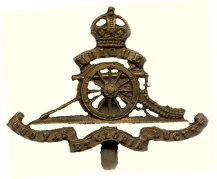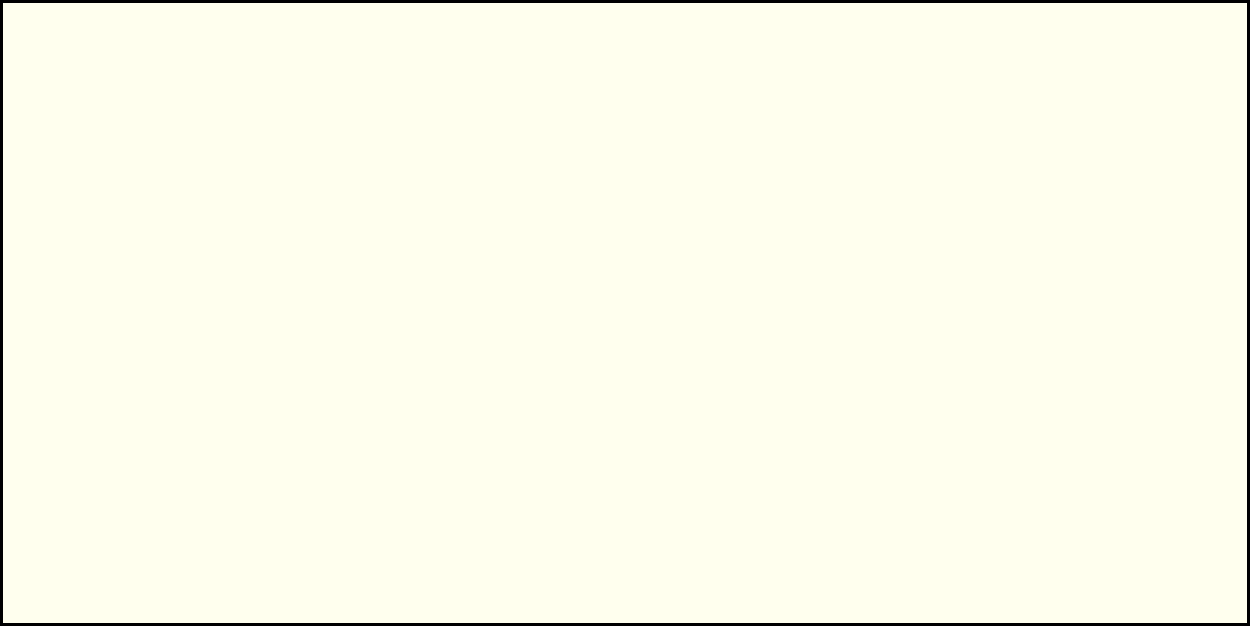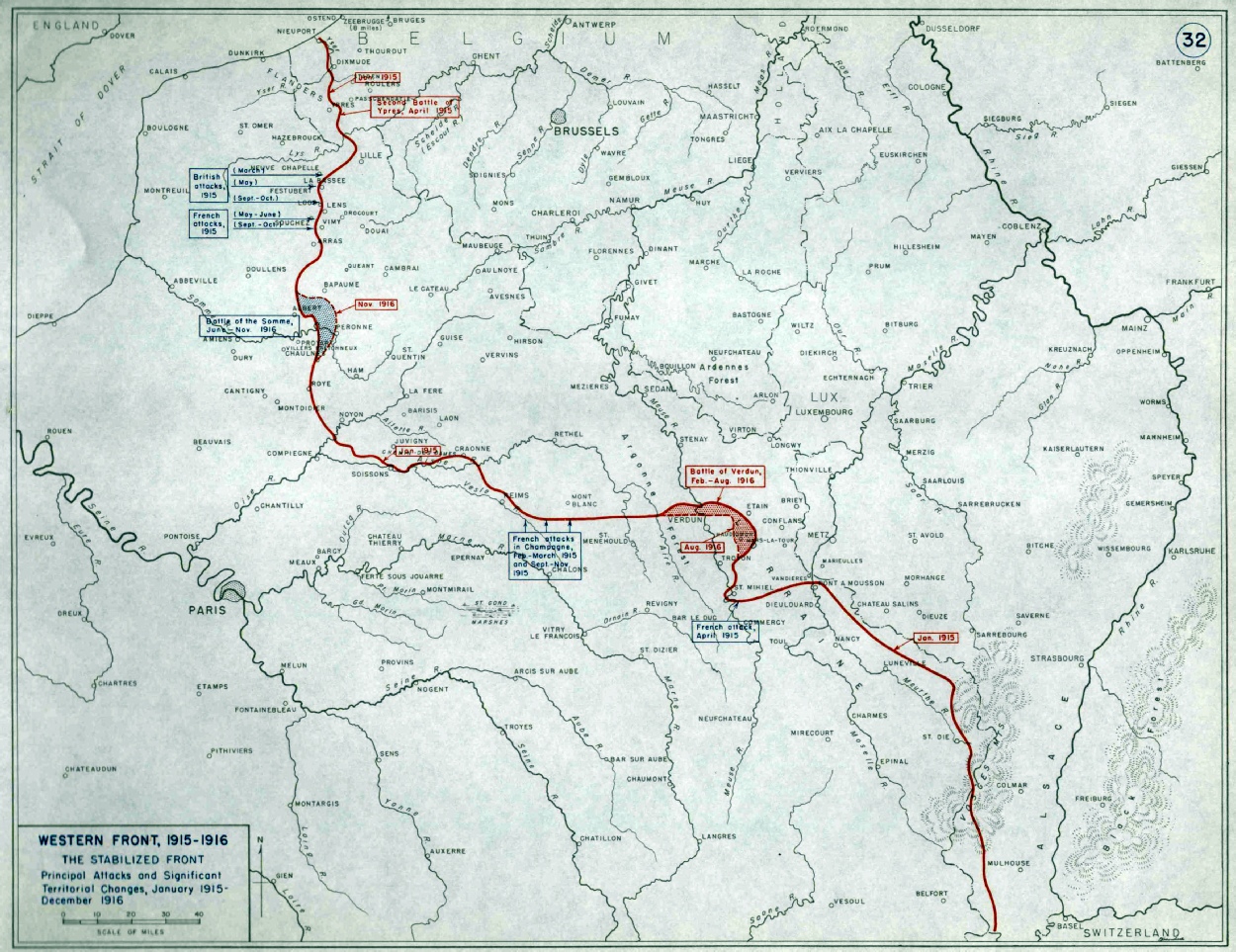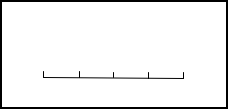

Henry Houseman
1889 - 1956
Henry Houseman was aged 26 years when he was attested at West Hartlepool for entry to the Military
service on the 27 August 1914. A medical examination took place that recorded him as standing 5’ 81/2”
tall and having a chest measurement of 37 inches and weighing 155 pounds. He had a fresh complexion,
grey eyes and black hair a tattoo of a bird on his left forearm. He was found fit for service.
Arthur was employed as a hairdresser at the time of his enlistment. He was not married, and gave as his
next of kin his Father Tom Turpin of 35 Swinkton Avenue, Leeming Road, York.
He signed the declaration on the attestation form, swore an oath and received the “King’s shilling”.
Arthur was then accepted into the army as a Gunner and allocated number 90346.
He was instructed to return home and to continue civilian life while he was formally on the Army Reserve,
awaiting call up. He duly received notice and was posted to the 149 Royal Horse & Royal Field Artillery
on the 5 September 1914 as Acting Bombardier and sent for training.
On the 19 January 1915 Henry was promoted to Bombardier with ‘B’ Battery 46th Brigade RFA
service on the 27 August 1914. A medical examination took place that recorded him as standing 5’ 81/2”
tall and having a chest measurement of 37 inches and weighing 155 pounds. He had a fresh complexion,
grey eyes and black hair a tattoo of a bird on his left forearm. He was found fit for service.
Arthur was employed as a hairdresser at the time of his enlistment. He was not married, and gave as his
next of kin his Father Tom Turpin of 35 Swinkton Avenue, Leeming Road, York.
He signed the declaration on the attestation form, swore an oath and received the “King’s shilling”.
Arthur was then accepted into the army as a Gunner and allocated number 90346.
He was instructed to return home and to continue civilian life while he was formally on the Army Reserve,
awaiting call up. He duly received notice and was posted to the 149 Royal Horse & Royal Field Artillery
on the 5 September 1914 as Acting Bombardier and sent for training.
On the 19 January 1915 Henry was promoted to Bombardier with ‘B’ Battery 46th Brigade RFA
In France
On the 19 May 1915 Henry arrived in France as part of the 14th (Light) Divison.
The Division came into existence as a result of Army Order No. 324, issued on 21 August 1914, which
authorised the formation of the six new Divisions of K1. It was formed of volunteers. At first it was
numbered the 8th (Light) Division, but as more regular army units became available to create a Division,
they were given precedence and this was renumbered as the 14th (Light) Division. Initially without
equipment or arms of any kind, the recruits were judged to be ready by May 1915, although its move to
the fighting front was delayed by lack of rifle and artillery ammunition. The 14th (Light) Division served on
the Western Front throughout the war.
Henry served in France and Flanders, with the 14nd Division, most probably taking part in:
1915
The Actions of The Hooge (19 July, 30 July, 9 August) (in which the division had the misfortune to be
the first to be attacked by flamethrower)
The Battle of Loos (Second Battle of Bellewaarde (25-26 September)).
1916
The Battle of the Somme (Delville Wood (15 July-3 September) and Flers Courcellete
(15-22 September)).
1917
The German retreat to the Hindenburg Line (14 March-5 April)
The Second Battle of Arras (First Battle of the Scarpe (9-14 April) and the Third Battle of the Scarpe
(3-4 May) ).
The Third Battle of Ypres ( The Battle of Langemarck (16-18 August), the First Battle of Passchendaele
12 October) and the Second Battle of Passchendaele (26 October - 10 November) ).
On the 7 April 1917 Henry was promoted to Acting Corporal and was confirmed in that rank on the
27 April.
1918
The First Battle of the Somme (Battle of St Quentin (21-23 March) and the Battle of Avre (4 April)).
In the above two actions the Division suffered very severe casualties, losing almost 6,000 troops. 46th and
47th Brigades RFA lost all their guns. The Division was withdrawn from the line and placed on the
construction of a new defensive line in the rear. On 26 April, the infantry battalions were reduced to a
training cadre. Various units were temporarily attached before the Division was moved to England for
re-establishment on 17 June 1918. The refreshed Division, although still short on numbers, moved back
to France and joined Second Army 2-6 July 1918
On the 15 September Henry was attached to the V Army Artillery School until the 9 October when he
Rejoined ‘B’ Battery 46th Brigade and the:
Final Advance in Flanders (Battle of Courtrai (14-19 October)).
Soon after, on the 11 November the Armistice agreement was signed.
Henry stayed on in the RFA and was discharged from the army on 13 January 1919 after 4 years and
140 days of service.
Because of his overseas service in a theatre of war he was qualified to wear the 1914-1915 Star Medal,
the British War Medal and Victory Medal.
The Division came into existence as a result of Army Order No. 324, issued on 21 August 1914, which
authorised the formation of the six new Divisions of K1. It was formed of volunteers. At first it was
numbered the 8th (Light) Division, but as more regular army units became available to create a Division,
they were given precedence and this was renumbered as the 14th (Light) Division. Initially without
equipment or arms of any kind, the recruits were judged to be ready by May 1915, although its move to
the fighting front was delayed by lack of rifle and artillery ammunition. The 14th (Light) Division served on
the Western Front throughout the war.
Henry served in France and Flanders, with the 14nd Division, most probably taking part in:
1915
The Actions of The Hooge (19 July, 30 July, 9 August) (in which the division had the misfortune to be
the first to be attacked by flamethrower)
The Battle of Loos (Second Battle of Bellewaarde (25-
1916
The Battle of the Somme (Delville Wood (15 July-
1917
The German retreat to the Hindenburg Line (14 March-
On the 7 April 1917 Henry was promoted to Acting Corporal and was confirmed in that rank on the
27 April.
1918
The First Battle of the Somme (Battle of St Quentin (21-
In the above two actions the Division suffered very severe casualties, losing almost 6,000 troops. 46th and
47th Brigades RFA lost all their guns. The Division was withdrawn from the line and placed on the
construction of a new defensive line in the rear. On 26 April, the infantry battalions were reduced to a
training cadre. Various units were temporarily attached before the Division was moved to England for
re-
On the 15 September Henry was attached to the V Army Artillery School until the 9 October when he
Rejoined ‘B’ Battery 46th Brigade and the:
Final Advance in Flanders (Battle of Courtrai (14-
Soon after, on the 11 November the Armistice agreement was signed.
Henry stayed on in the RFA and was discharged from the army on 13 January 1919 after 4 years and
140 days of service.
Because of his overseas service in a theatre of war he was qualified to wear the 1914-
Henry was aged 30 years when he was re-attested at Roubaix in France for re-entry in to the Military on
the 14 January 1919. A medical examination took place that recorded him as standing 5’ 83/4” tall and h
having a chest measurement of 39 inches and weighing 168 pounds. He was described as having a dark
complexion, grey eyes and dark hair. He was found fit for service.
Henry’s trade was still as a hairdresser. He was not married on this date but is shown later as marrying
Eva Valerie Ambler on the 3 June 1919 and having two children Audrey May and John Raymond.
His address is shown as 1 Railway Cottages, Chester le Street, Co Durham. His next of kin is Mr T T
Houseman of the same address.
He once again signed the declaration, swore an oath and received the “King’s shilling” and was then
accepted back in to the army as Gunner and allocated number 90346. He was immediately promoted
to Corporal and posted to ‘B’ Battery 46th Brigade RFA.
Henry was at the dispersal centre from the 3 February until the 5 April after which he rejoined his depot.
On the 8 April he was posted to a Reserve Brigade, on the 10 May he was posted to ‘L’ Battery 7th Brigade
RFA and finally on the 19 August he was posted to 2nd Battery 13th Brigade RFA. For some reason on the
15 October Henry reverted to the rank of Gunner at his own request.
On the 24 October he was onboard ship in Tilbury bound for Mesopotamia via Bombay.
having a chest measurement of 39 inches and weighing 168 pounds. He was described as having a dark
complexion, grey eyes and dark hair. He was found fit for service.
Henry’s trade was still as a hairdresser. He was not married on this date but is shown later as marrying
Eva Valerie Ambler on the 3 June 1919 and having two children Audrey May and John Raymond.
His address is shown as 1 Railway Cottages, Chester le Street, Co Durham. His next of kin is Mr T T
Houseman of the same address.
He once again signed the declaration, swore an oath and received the “King’s shilling” and was then
accepted back in to the army as Gunner and allocated number 90346. He was immediately promoted
to Corporal and posted to ‘B’ Battery 46th Brigade RFA.
Henry was at the dispersal centre from the 3 February until the 5 April after which he rejoined his depot.
On the 8 April he was posted to a Reserve Brigade, on the 10 May he was posted to ‘L’ Battery 7th Brigade
RFA and finally on the 19 August he was posted to 2nd Battery 13th Brigade RFA. For some reason on the
15 October Henry reverted to the rank of Gunner at his own request.
On the 24 October he was onboard ship in Tilbury bound for Mesopotamia via Bombay.
In Mesopotamia
On the 21 November 1919 Henry arrived in Mesopotamia as part of the 7th (Meerut) Division Indian Army.
For centuries before the Great War, Mesopotamia had been part of the Turkish Ottoman Empire. Lying
along its eastern border was Persia, generally friendly to the British. The Arab Sheiks of nearby Kuwait
and Muhammerah also supported Britain; the Arab tribes of coastal Mesopotamia often changed sides.
Germany had for many years before the war assiduously developed Turkey as an ally, which it saw as an
important part of the Drang nach Osten ("Thrust towards the East": Germany wanted new lands, new
markets, "lebensraum"). The Turkish army was led by German 'advisors', as was much of its trade and
commerce. Although this campaign began simply to secure oil supplies for the Royal Navy, victory over
the Turks became believed by some - notably David Lloyd George and Winston Churchill - to be a less
costly way towards defeat of Germany than the painful battering at the Western Front. Pushed by
Germany - which also tried to encourage a Jihad (Muslim Holy War) against the British forces - Turkey
was to strongly resist the British incursion
From the 22 November 1919 until 9 April 1921 the 7th Division was part of the Mesopotamia Expeditionary
Force fighting Arab rebels during uprisings against British rule. On the 30 April 1920 Henry was appointed
The rank of Lance Bombardier and on the 4 February 1921 he was allocated a new army number
1045660.
After leaving Mesopotamia on the 10 April 1921 Henry was on board ship until the 17 April bound for
Bombay where he was stationed until the 24 May 1921. He was then back on board ship on the 25 May
bound for home arriving in Southampton on the 20 June 1921.
He was discharged from the army on the 31 May 1921 at Woolwich after 3 years and 138 days of service.
His address was shown as 5 Railway Cottages, Copmanthorpe, Nr York.
He was described as having very good character and a reliable and hardworking N.C.O.
Henry received the General Service Medal with Iraq clasp.
For centuries before the Great War, Mesopotamia had been part of the Turkish Ottoman Empire. Lying
along its eastern border was Persia, generally friendly to the British. The Arab Sheiks of nearby Kuwait
and Muhammerah also supported Britain; the Arab tribes of coastal Mesopotamia often changed sides.
Germany had for many years before the war assiduously developed Turkey as an ally, which it saw as an
important part of the Drang nach Osten ("Thrust towards the East": Germany wanted new lands, new
markets, "lebensraum"). The Turkish army was led by German 'advisors', as was much of its trade and
commerce. Although this campaign began simply to secure oil supplies for the Royal Navy, victory over
the Turks became believed by some -
Germany -
From the 22 November 1919 until 9 April 1921 the 7th Division was part of the Mesopotamia Expeditionary
Force fighting Arab rebels during uprisings against British rule. On the 30 April 1920 Henry was appointed
The rank of Lance Bombardier and on the 4 February 1921 he was allocated a new army number
1045660.
After leaving Mesopotamia on the 10 April 1921 Henry was on board ship until the 17 April bound for
Bombay where he was stationed until the 24 May 1921. He was then back on board ship on the 25 May
bound for home arriving in Southampton on the 20 June 1921.
He was discharged from the army on the 31 May 1921 at Woolwich after 3 years and 138 days of service.
His address was shown as 5 Railway Cottages, Copmanthorpe, Nr York.
He was described as having very good character and a reliable and hardworking N.C.O.
Henry received the General Service Medal with Iraq clasp.
1914-1919
Henry Houseman
1889 - 1956
1919-1921


1939-1943
Henry was aged 51 years when he was attested at Doncaster for entry in to the Military on the 29 December 1939.
A medical examination took place that recorded him as standing 5’ 81/2” tall and having a chest measurement of 35 1/2
inches and weighing 154 pounds. He was described as having a fresh complexion, grey eyes and brown hair, bald on top.
He was described as having complete double dentures and tattoo marks on both forearms. He was found fit for service.
Henry’s trade was still is now a Labourer. His address is shown as 143 High Street, Dunsville, Doncaster. His next of kin is
Mr Tom Turpin Houseman of the same address.
He once again signed the declaration, swore an oath and received the “King’s shilling” and was then accepted back in to the
army as Gunner with his last number 1045660. He was posted as Gunner to 220 Battery 112 Field Regiment Royal Artillery
at Monmouth House, Tisbury, Wiltshire.. On the 30 December he was promoted to Acting Bombardier.
112 Field Regiment was a second line regiment formed from the 55 (Wessex) Field Regiment. It consisted of two batteries,
the 217 and 220 (Wiltshire). It remained in the United Kingdom until June 1944 when it was deployed to France, with the
43rd (Wessex) Infantry Division.
On the 30 March 1940 Henry was granted the rank Warrant Bombardier still in the 112th Field Regiment and on the 15 April 1940
Henry was posted to ‘D’ Battery 58th Heavy Regiment and on the 16 May 1941 he was transferred to the VP wing of the Corps of Military
Police 58th Heavy Regiment. (VP = Vulnerable Points). Known as the 'Blue Hats' this was a new wing formed in 1941 with men
of lower physical categories to patrol and guard key installations and infrastructure.
He was promoted to Corporal and on the 17 May 1942 was transferred to 333 Coy Corps of Military Police (V.P) where he was promoted, first
To Warrant Corporal, then Acting Sergeant, then Sergeant and finally Warrant Sergeant.
Henry finished his army career whilst with 333 Coy CMP as his services were no longer required for the purpose for which he enlisted
And was duly discharged on the 21 April 1943 after 31/4 years.
His home address is now shown as 85 Sprotboro Road, Doncaster, his Military conduct is described as ‘Exemplary’ and on the
8 September 1943 he was awarded the Defence Medal.
A medical examination took place that recorded him as standing 5’ 81/2” tall and having a chest measurement of 35 1/2
inches and weighing 154 pounds. He was described as having a fresh complexion, grey eyes and brown hair, bald on top.
He was described as having complete double dentures and tattoo marks on both forearms. He was found fit for service.
Henry’s trade was still is now a Labourer. His address is shown as 143 High Street, Dunsville, Doncaster. His next of kin is
Mr Tom Turpin Houseman of the same address.
He once again signed the declaration, swore an oath and received the “King’s shilling” and was then accepted back in to the
army as Gunner with his last number 1045660. He was posted as Gunner to 220 Battery 112 Field Regiment Royal Artillery
at Monmouth House, Tisbury, Wiltshire.. On the 30 December he was promoted to Acting Bombardier.
112 Field Regiment was a second line regiment formed from the 55 (Wessex) Field Regiment. It consisted of two batteries,
the 217 and 220 (Wiltshire). It remained in the United Kingdom until June 1944 when it was deployed to France, with the
43rd (Wessex) Infantry Division.
On the 30 March 1940 Henry was granted the rank Warrant Bombardier still in the 112th Field Regiment and on the 15 April 1940
Henry was posted to ‘D’ Battery 58th Heavy Regiment and on the 16 May 1941 he was transferred to the VP wing of the Corps of Military
Police 58th Heavy Regiment. (VP = Vulnerable Points). Known as the 'Blue Hats' this was a new wing formed in 1941 with men
of lower physical categories to patrol and guard key installations and infrastructure.
He was promoted to Corporal and on the 17 May 1942 was transferred to 333 Coy Corps of Military Police (V.P) where he was promoted, first
To Warrant Corporal, then Acting Sergeant, then Sergeant and finally Warrant Sergeant.
Henry finished his army career whilst with 333 Coy CMP as his services were no longer required for the purpose for which he enlisted
And was duly discharged on the 21 April 1943 after 31/4 years.
His home address is now shown as 85 Sprotboro Road, Doncaster, his Military conduct is described as ‘Exemplary’ and on the
8 September 1943 he was awarded the Defence Medal.
.


= Battle of the Somme
= German Retreat to the Hindenburg Line
= Second Battle of Arras
= The Battle of Loos
= Third Battle of Ypres
= Actions of the Hooge
Hover your mouse over a circle
for more information
for more information
1915
1916

SCALE IN MILES
0
10
20
30
Western Front 1914 -1918
1917
1918
= First Battle of the Somme
= Final Advance on to Flanders
Corporal - service number 90346
46th Brigade Royal Field Artillery
Lance Bombardier - service number 1045660
13th Brigade Royal Field Artillery
Warrant Sergeant - service number 1045660
333 Coy Corps of Military Police (VP)